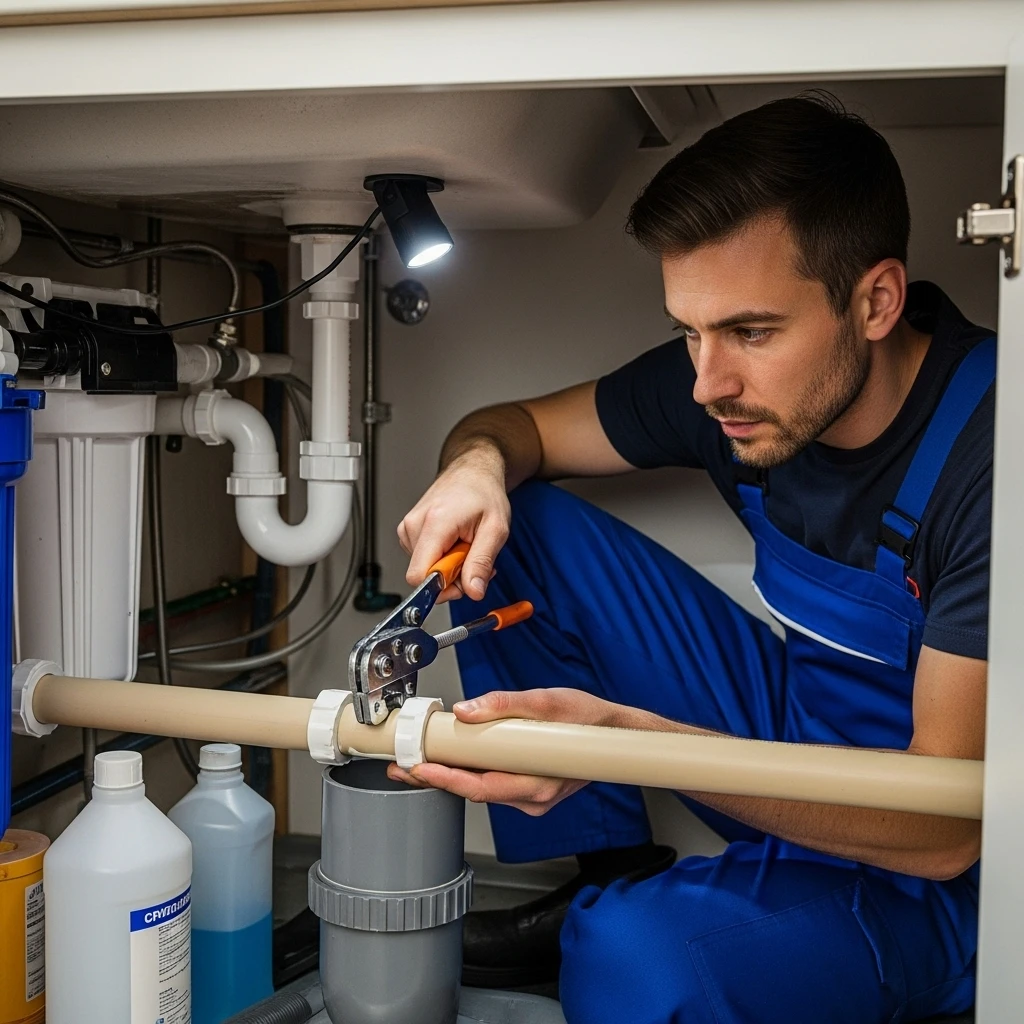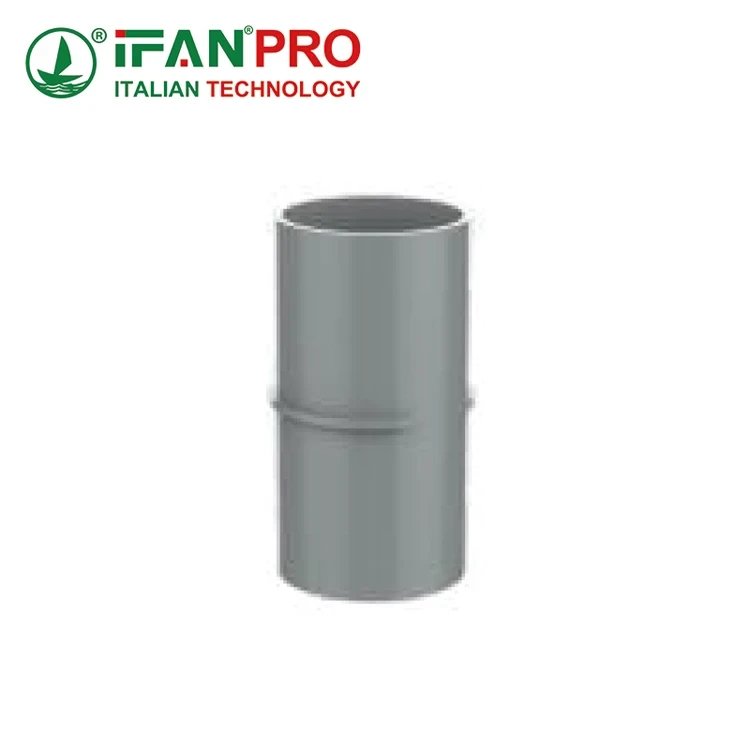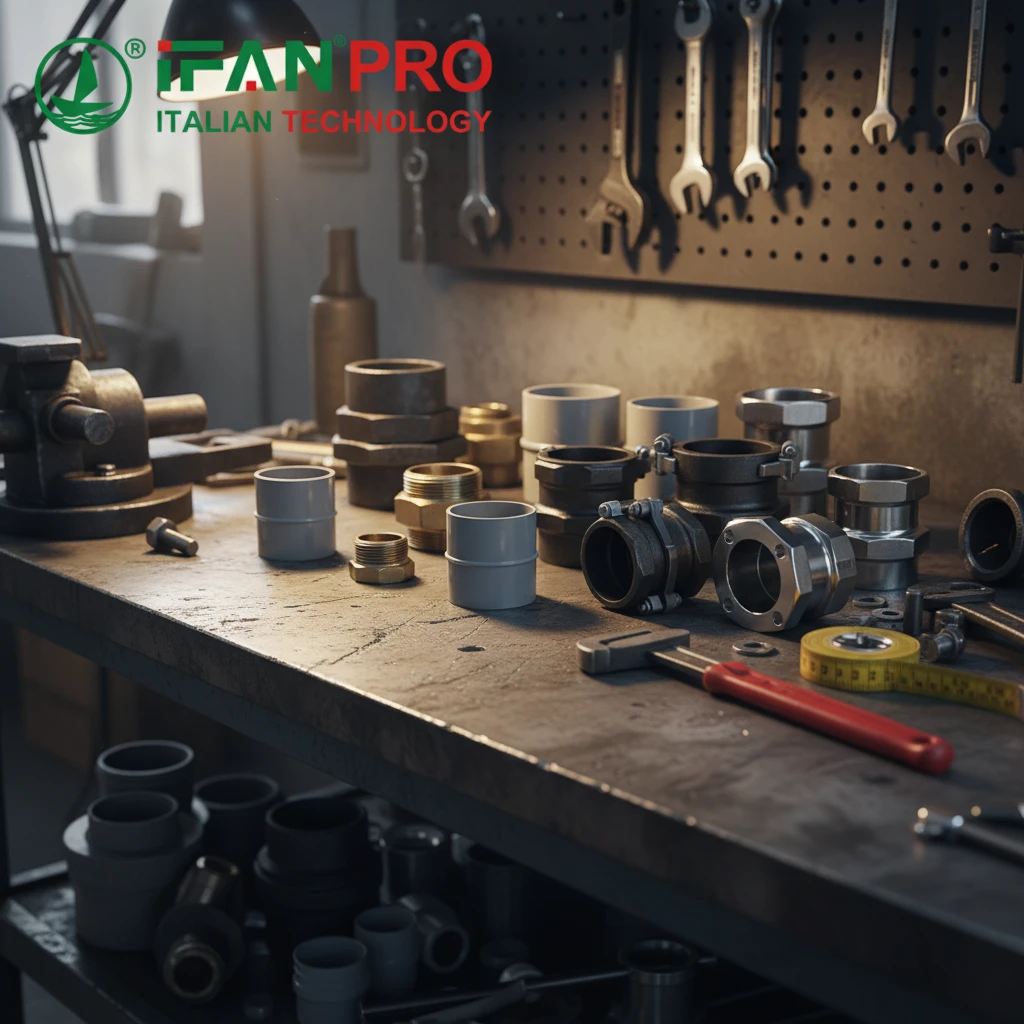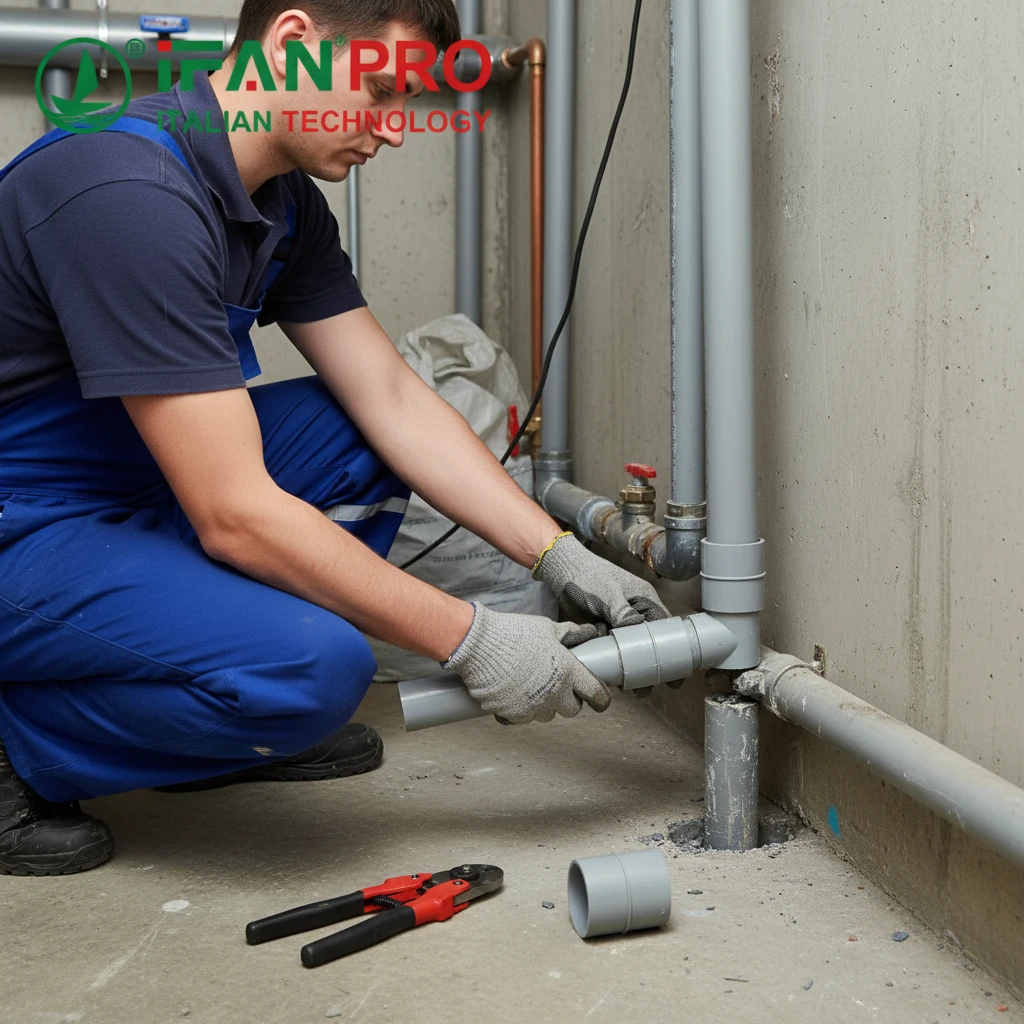I’ve watched plumbing crews struggle for hours with threaded metal pipes, then complete the same job in half the time with CPVC. The time savings are real and significant.
Yes, CPVC can significantly save on installation time. Its solvent cement joining system creates permanent bonds in seconds without specialized tools, while its lightweight nature and easy cutting make handling and fitting much faster than with heavy metal pipes that require threading or soldering.
Let me show you exactly how CPVC installation beats traditional methods in speed and efficiency.
How Does CPVC’s Solvent Cement Joining Speed Up Installation Versus Threaded Pipes?
I remember a project where switching from galvanized steel to CPVC cut joining time by 70%. The crew finished two days ahead of schedule.
CPVC’s solvent cement joining speeds up installation by creating instant, permanent bonds in 30 seconds versus 10-15 minutes per threaded joint. The cement chemically welds pipes and fittings together without needing threading machines, torches, or multiple tools, eliminating complex preparation and cleanup steps.

The Simple Science of Solvent Welding
CPVC joining relies on a straightforward chemical process. The solvent cement temporarily dissolves the outer layers of both the pipe and fitting. When you push them together, the materials actually fuse into a single piece as the solvent evaporates. This creates a joint that’s often stronger than the pipe itself.
The process is incredibly simple:
- Cut the pipe to length
- Apply primer (if required by code)
- Brush cement on both surfaces
- Push together and give a quarter turn
- Hold for 30 seconds
That’s it. The joint is ready for pressure testing in as little as 15 minutes, depending on pipe size and conditions.
Comparison with Threaded Systems
Threaded metal pipes require multiple steps and tools. Each joint needs:
- Precise cutting and deburring
- Threading with heavy machinery
- Applying thread sealant tape or compound
- Tightening with wrenches
- Checking for proper alignment
Time Comparison per Joint
| Process Step | CPVC Solvent Cement | Threaded Metal Pipes |
|---|---|---|
| Preparation | 15 seconds | 2-3 minutes |
| Joining | 15 seconds | 3-5 minutes |
| Curing/Setting | 30 seconds | 5-7 minutes |
| Total Time | 1 minute | 10-15 minutes |
Real-World Time Savings
On a typical residential plumbing project with 100-150 joints, the time savings become dramatic. CPVC installation can be completed in 1-2 days compared to 3-5 days for threaded systems. This doesn’t even account for the reduced fatigue and increased productivity from working with lighter materials.
The solvent cement system also eliminates common threaded connection problems like over-tightening, cross-threading, or improper sealant application. This means fewer callbacks and rework, saving additional time and money.
What Makes CPVC Easier to Cut and Fit Than Metal Alternatives?
During a retrofit project last month, our team cut and installed CPVC piping in tight spaces where metal pipes would have required major structural modifications.
CPVC is easier to cut and fit because it requires only a simple tubing cutter or saw and produces clean, ready-to-use ends instantly. Unlike metal pipes, CPVC doesn’t need deburring, reaming, or special threading equipment, and its flexibility allows for easy adjustments during dry-fitting.

Simple Cutting Process
Cutting CPVC is remarkably straightforward. You can use:
- Standard tubing cutters (quickest method)
- Hacksaws
- Power miter saws with plastic-cutting blades
- Ratchet cutters for tight spaces
The process is clean and produces no metal shavings or sharp edges. A single rotation with a tubing cutter gives you a perfect, square cut ready for cementing. There’s no need for deburring tools or filing down rough edges.
Fitting Advantages
CPVC’s flexibility during dry-fitting is a major time-saver. You can:
- Make small adjustments without recutting
- Test entire sections before cementing
- Easily handle offsets and minor measurement errors
- Work in confined spaces without special equipment
Metal pipes offer no such flexibility. Once cut, they’re rigid and unforgiving. A slight measurement error means recutting and rethreading the entire section.
Tool Requirements Comparison
| Tool Type | CPVC Requirements | Metal Pipe Requirements |
|---|---|---|
| Cutting | $20 tubing cutter | $100+ power cutter or saw |
| Preparation | None needed | Deburring tool, reamer |
| Joining | $10 brush applicator | Threading machine ($500+) |
| Special Tools | None | Pipe wrenches, thread sealants |
Handling and Maneuverability
CPVC’s workability shines in complex installations. I’ve seen plumbers make multiple cuts and adjustments in minutes that would take hours with metal pipes. The ability to dry-fit entire systems ensures everything aligns perfectly before making permanent connections.
This ease of cutting and fitting significantly reduces material waste too. With metal pipes, a single bad cut means scrapping an expensive length of pipe. With CPVC, you can usually salvage the piece for another location or make quick, inexpensive corrections.
How Does CPVC’s Lightweight Nature Reduce Labor Time and Costs?
We recently calculated that switching from copper to CPVC saved 45 minutes per hour in labor time simply due to easier handling and reduced worker fatigue.
CPVC’s lightweight nature reduces labor time and costs because it weighs up to 80% less than metal pipes, enabling one person to handle long sections easily. This eliminates need for multiple workers, reduces installation time by 30-50%, and minimizes worker fatigue and injury risk.

Weight Comparison Analysis
The weight difference between CPVC and traditional materials is substantial. A 10-foot length of 1/2-inch CPVC weighs approximately 2 pounds, while the same size in copper weighs about 7 pounds, and steel weighs over 14 pounds.
This weight advantage translates directly into labor savings. One worker can easily carry and position multiple 20-foot lengths of CPVC, while metal pipes often require two people or mechanical assistance.
Labor Efficiency Benefits
The lightweight nature impacts several aspects of installation efficiency:
Easier Transportation:
- Workers can carry more material in one trip
- No need for material hoists or multiple helpers
- Faster movement between storage and work areas
Simplified Positioning:
- One-person installation in most situations
- Easy overhead work without heavy lifting equipment
- Quick adjustments and repositioning
Reduced Fatigue:
- Workers maintain productivity throughout the day
- Fewer breaks needed
- Lower risk of strain injuries
Installation Time Impact
| Task | CPVC (1 worker) | Metal Pipes (2 workers) |
|---|---|---|
| Material Transport | 15 minutes | 45 minutes |
| Overhead Installation | 2 hours | 4 hours |
| Positioning/Alignment | 30 minutes | 90 minutes |
| Total 8-hour Day | 6.5 productive hours | 3.5 productive hours |
Cost Savings Calculation
The labor cost savings are substantial. Based on average plumbing rates:
- CPVC installation: 1 worker × $75/hour × 6 hours = $450
- Metal pipe installation: 2 workers × $75/hour × 6 hours = $900
This 50% labor cost reduction doesn’t include the time saved from easier cutting, joining, and handling we’ve discussed in previous sections. When combined, the total savings typically reach 60-70% compared to metal pipe installations.
What Installation Steps Make CPVC Faster Than Other Plumbing Materials?
After supervising hundreds of installations, I’ve documented exactly which steps make CPVC faster—the results might surprise you.
CPVC installation is faster because it eliminates multiple time-consuming steps: no threading, no soldering, no heavy lifting, and no complex measurements. The simple cut-cement-connect process requires fewer tools, less skill, and creates permanent joints in seconds instead of minutes.

Step-by-Step Time Analysis
Let’s break down a typical connection for both CPVC and metal pipes:
CPVC Installation Steps:
- Measure and mark (15 seconds)
- Cut with tubing cutter (15 seconds)
- Dry fit and check alignment (30 seconds)
- Apply cement and join (30 seconds)
- Wipe excess cement (15 seconds)
Total time: 1 minute, 45 seconds
Metal Pipe Installation Steps:
- Measure and mark (30 seconds – more precision needed)
- Cut with power cutter (45 seconds)
- Deburr and ream (30 seconds)
- Thread the pipe (2-3 minutes)
- Apply thread sealant (30 seconds)
- Tighten with wrenches (1-2 minutes)
- Check for leaks and reposition if needed (1-2 minutes)
Total time: 6-9 minutes
Tool and Equipment Savings
CPVC installation requires minimal tools:
- Tubing cutter ($20-50)
- Measuring tape
- Cement and primer ($15)
- Cleaning cloth
Metal pipes require significant investment:
- Power threader ($500-2000)
- Pipe cutters ($100-300)
- Deburring tools
- Multiple wrenches
- Thread sealants
- Soldering equipment (for copper)
Installation Process Comparison
| Process Aspect | CPVC Advantages | Traditional Material Challenges |
|---|---|---|
| Skill Level | Beginner-friendly | Requires specialized training |
| Tool Cost | Under $100 | $500-$3000 investment |
| Joint Quality | Consistent results | Skill-dependent |
| Correction Time | 2-3 minutes | 10-15 minutes |
| Cleanup | Minimal | Significant debris and waste |
Real Project Time Savings
On a typical whole-house repiping project:
- CPVC installation: 2-3 days with 2 workers
- Copper installation: 4-5 days with 3 workers
- Steel installation: 5-6 days with 3 workers
The time savings come from multiple factors:
- No flame permits or hot work safety protocols
- No waiting for pipes to cool before handling
- Immediate pressure testing capability
- Easy corrections and modifications
- Reduced cleanup time
The cumulative effect of all these time savings makes CPVC the fastest plumbing material to install, while still providing exceptional performance and longevity.
Conclusion
CPVC delivers significant time savings through easier installation, lighter weight, and simpler joining methods. For fast, reliable CPVC solutions, choose IFAN‘s certified pipes and fittings.













Recent Comments